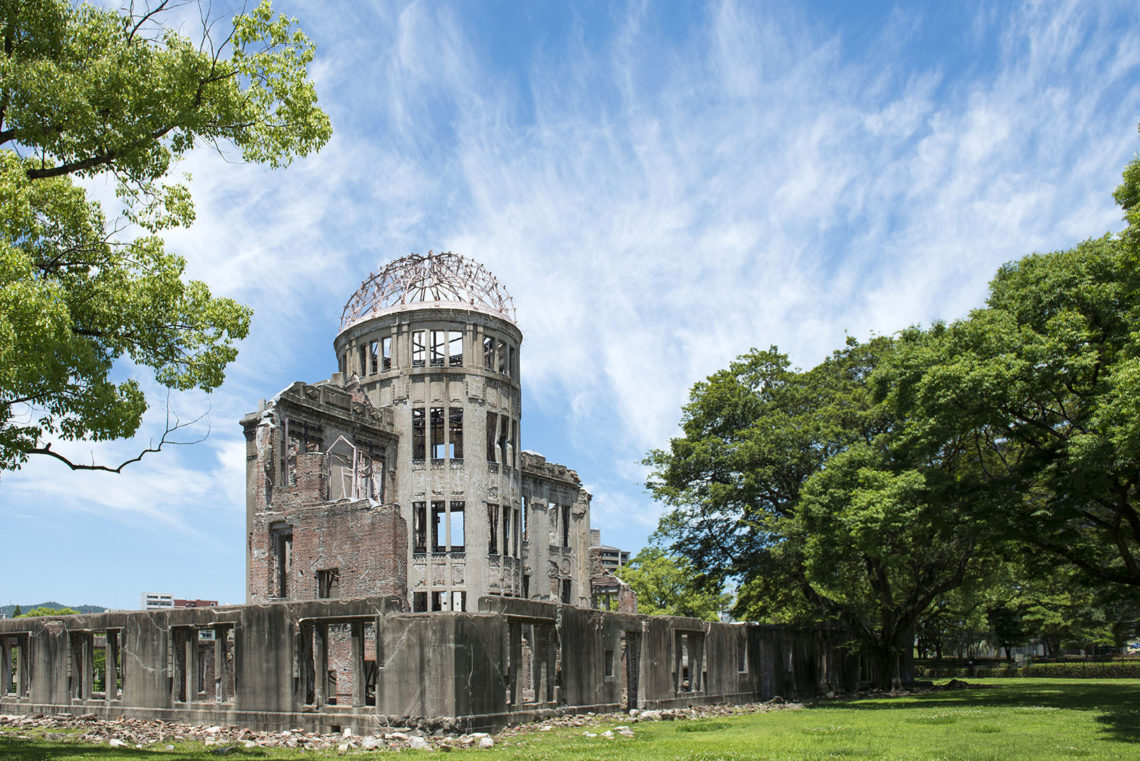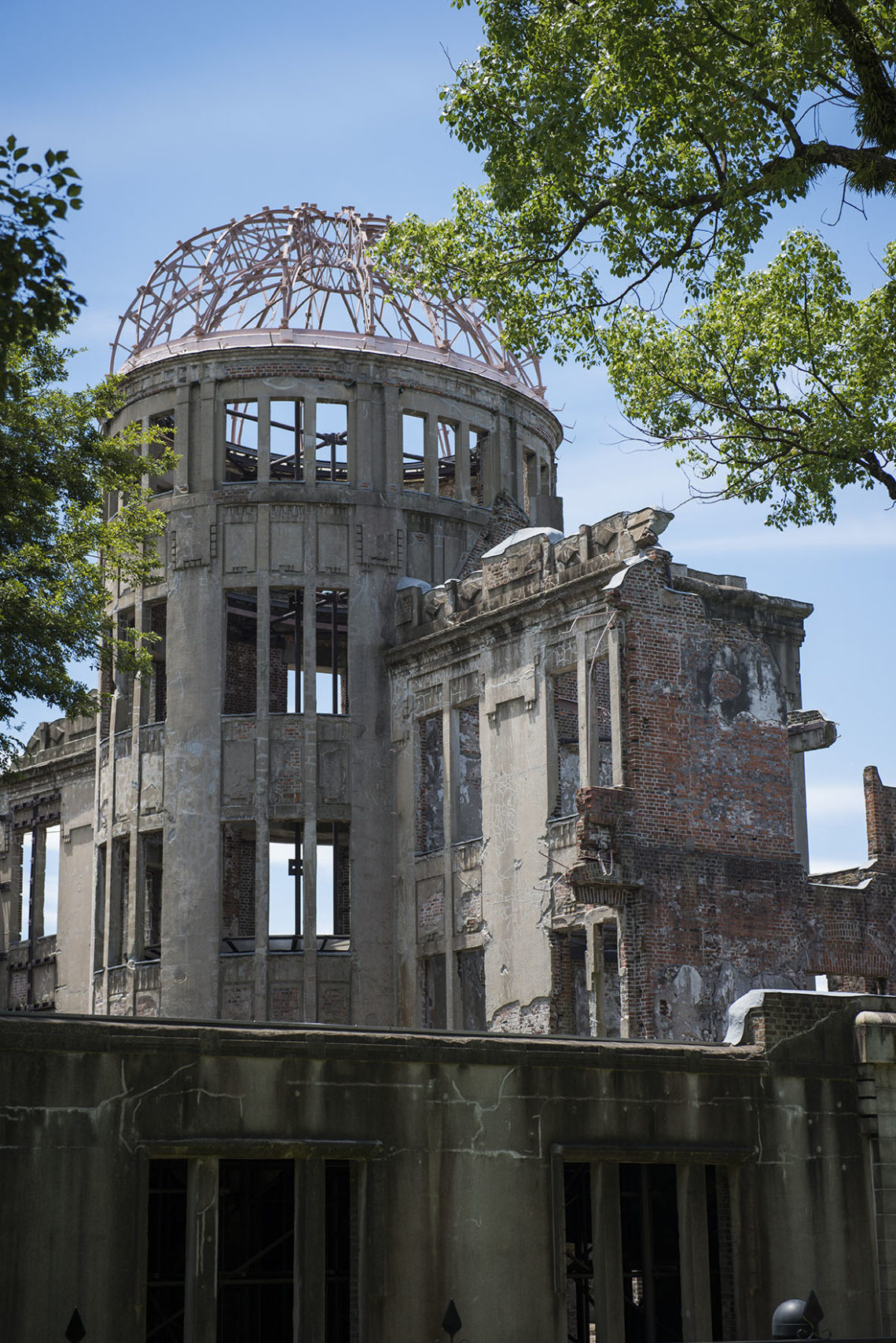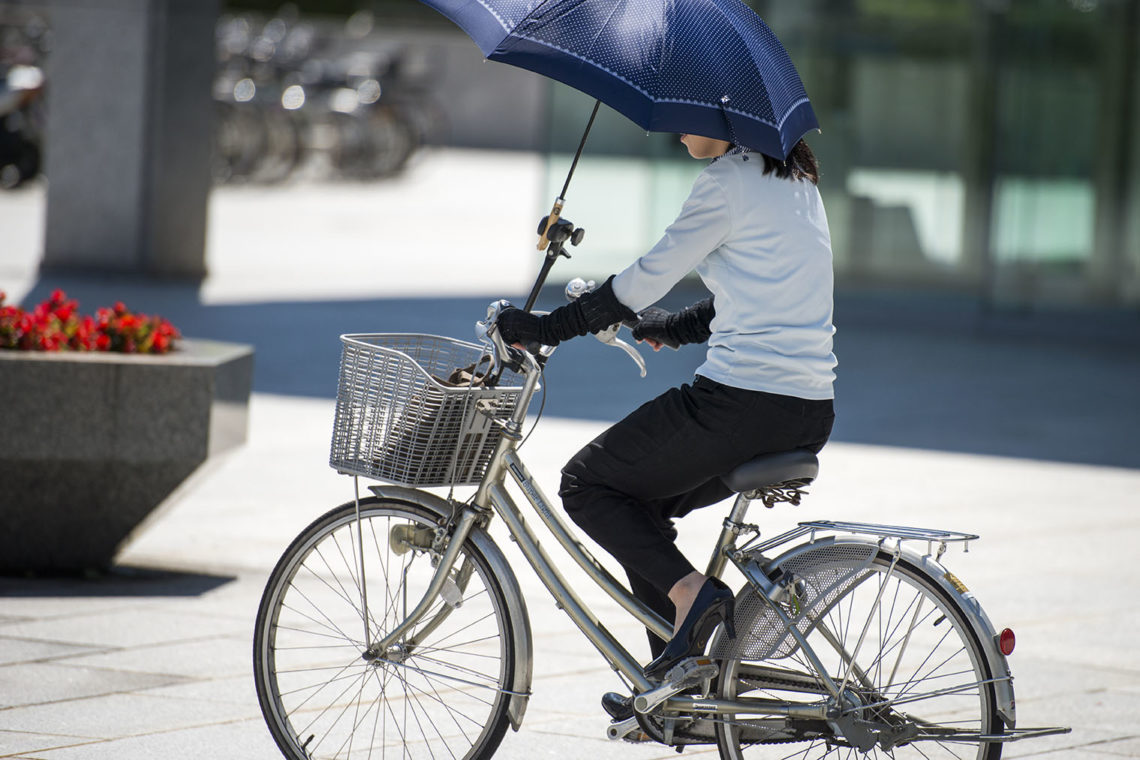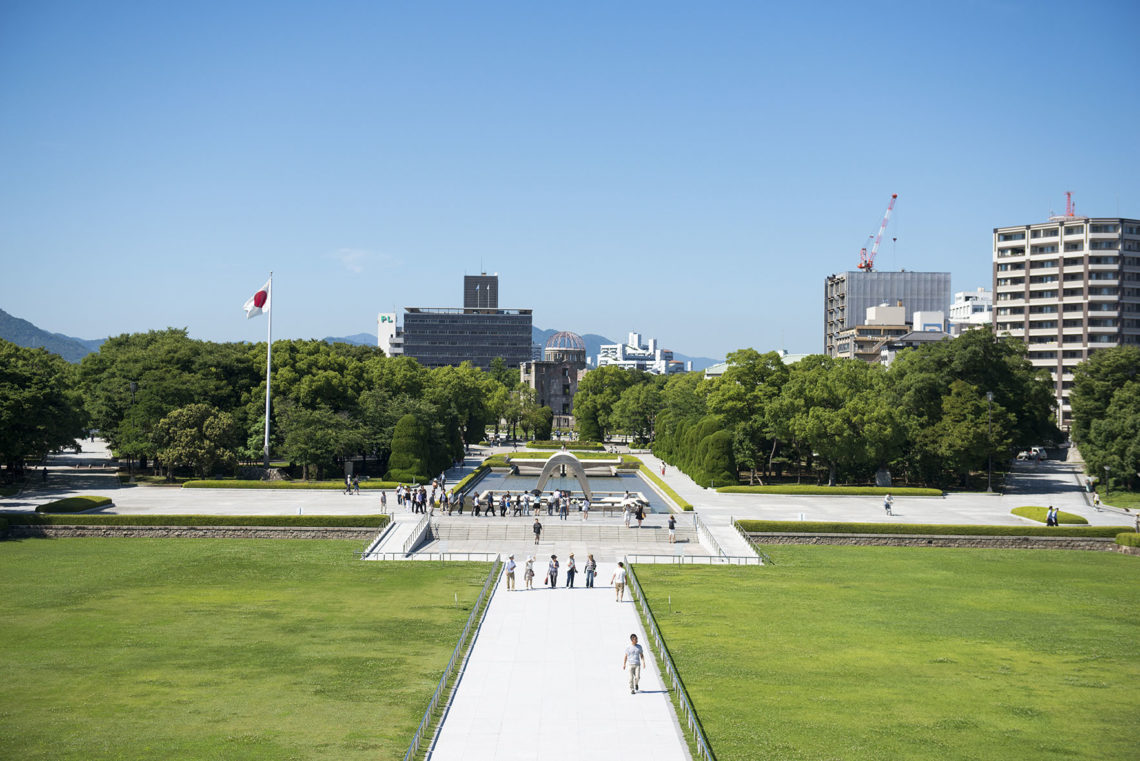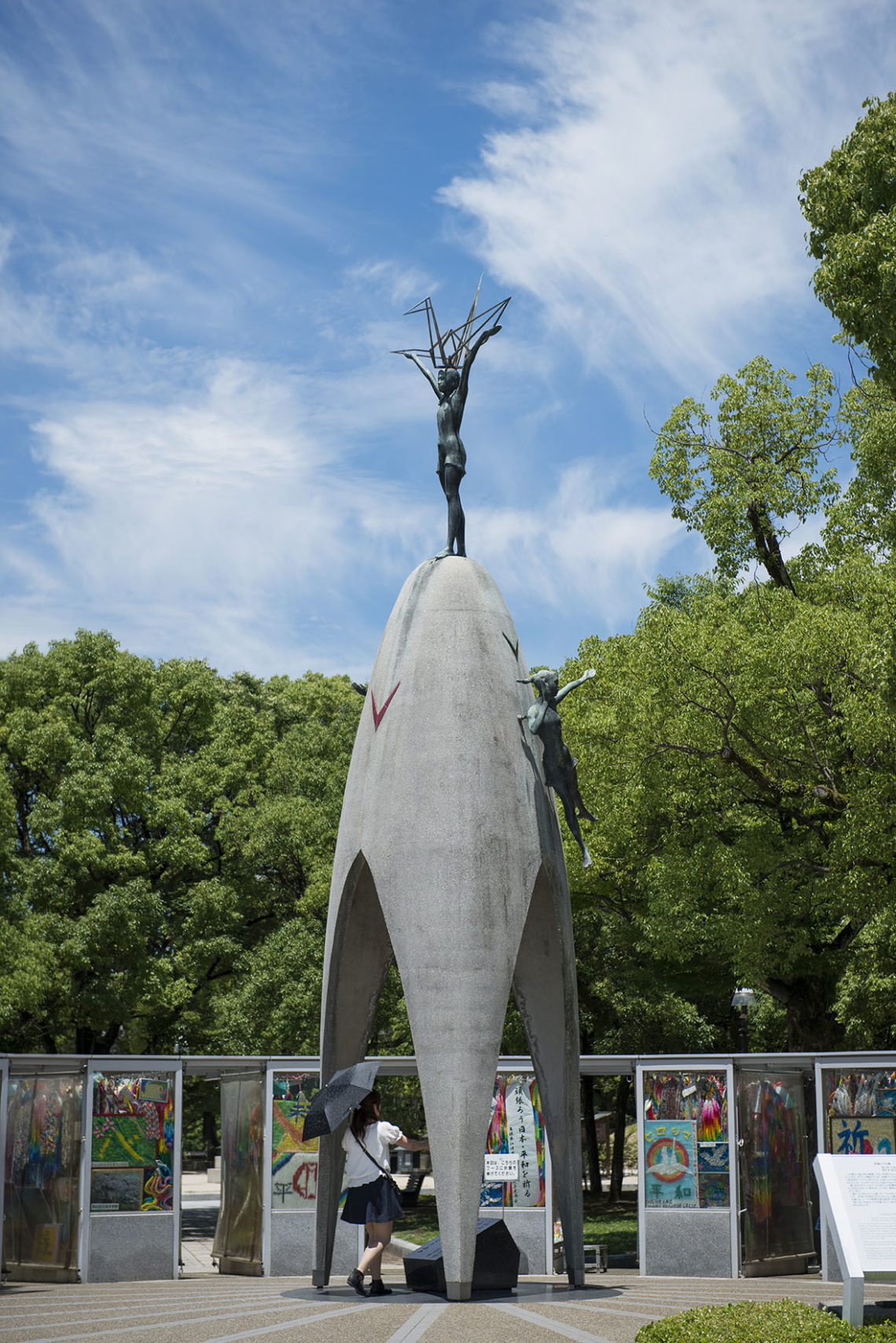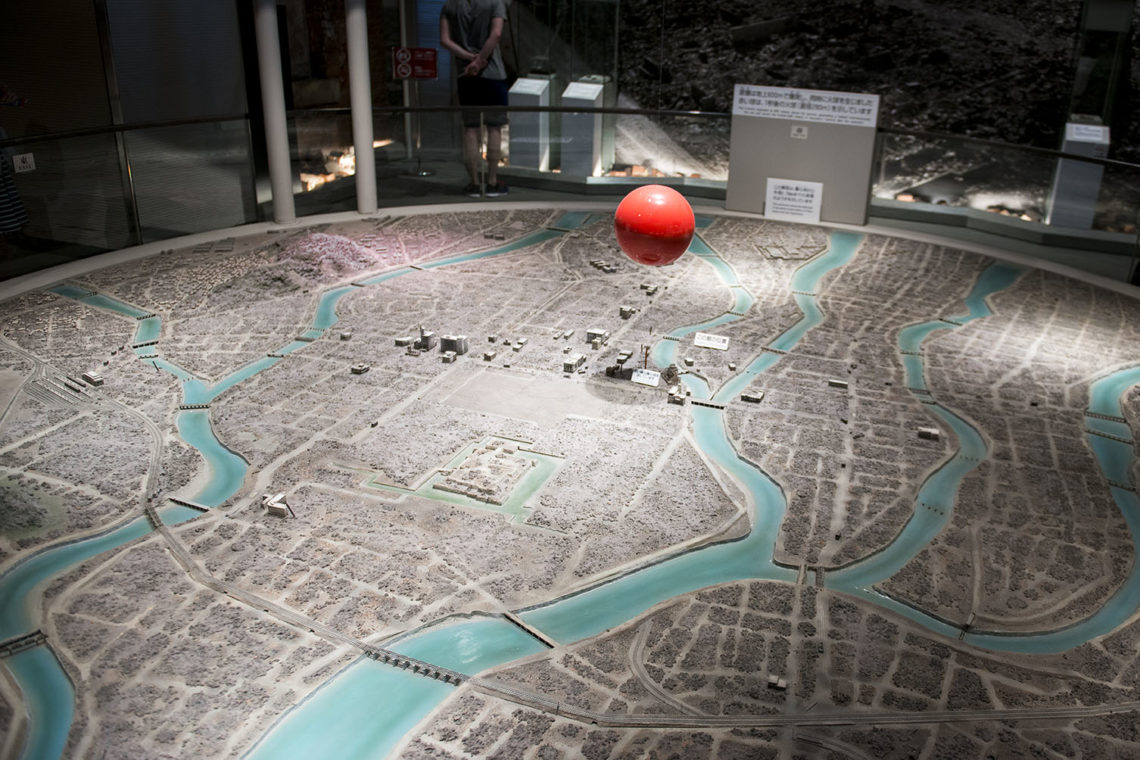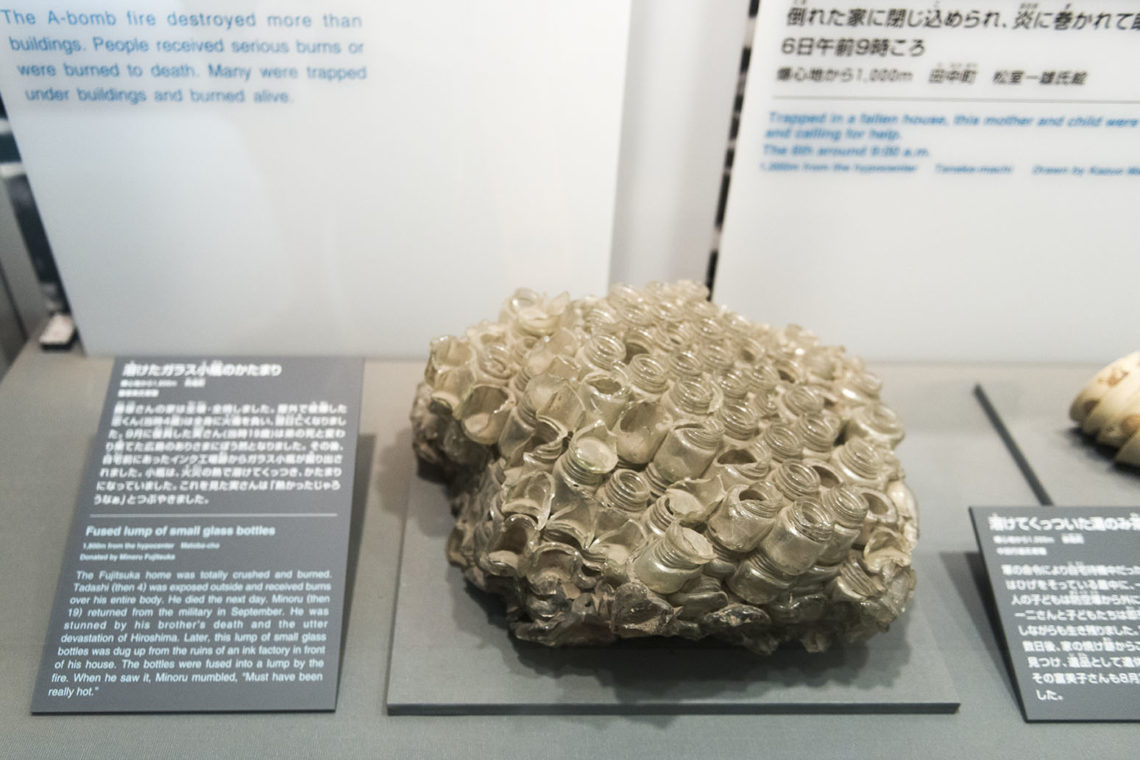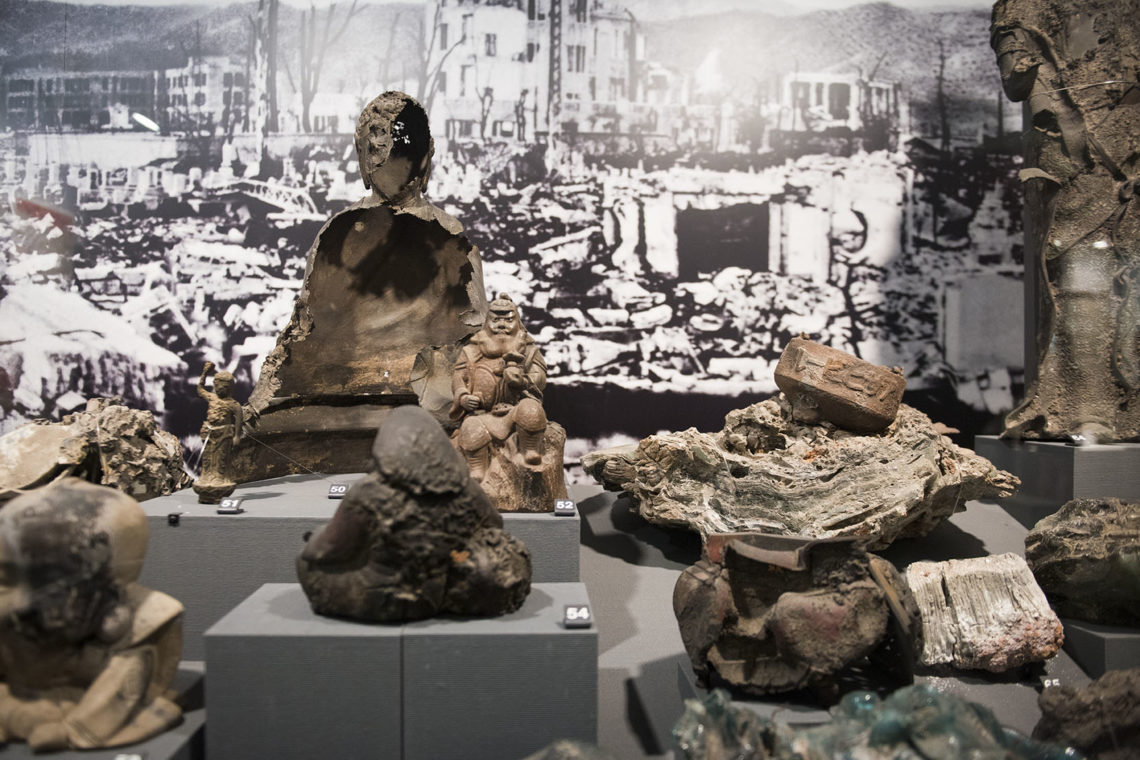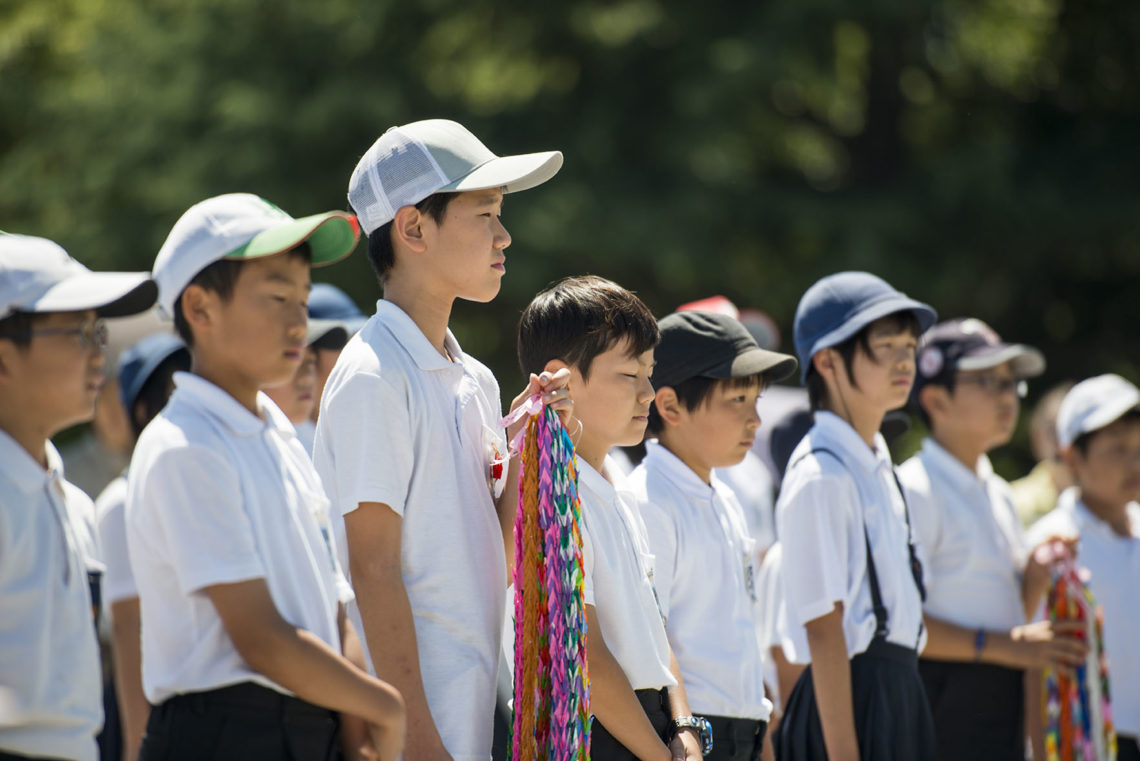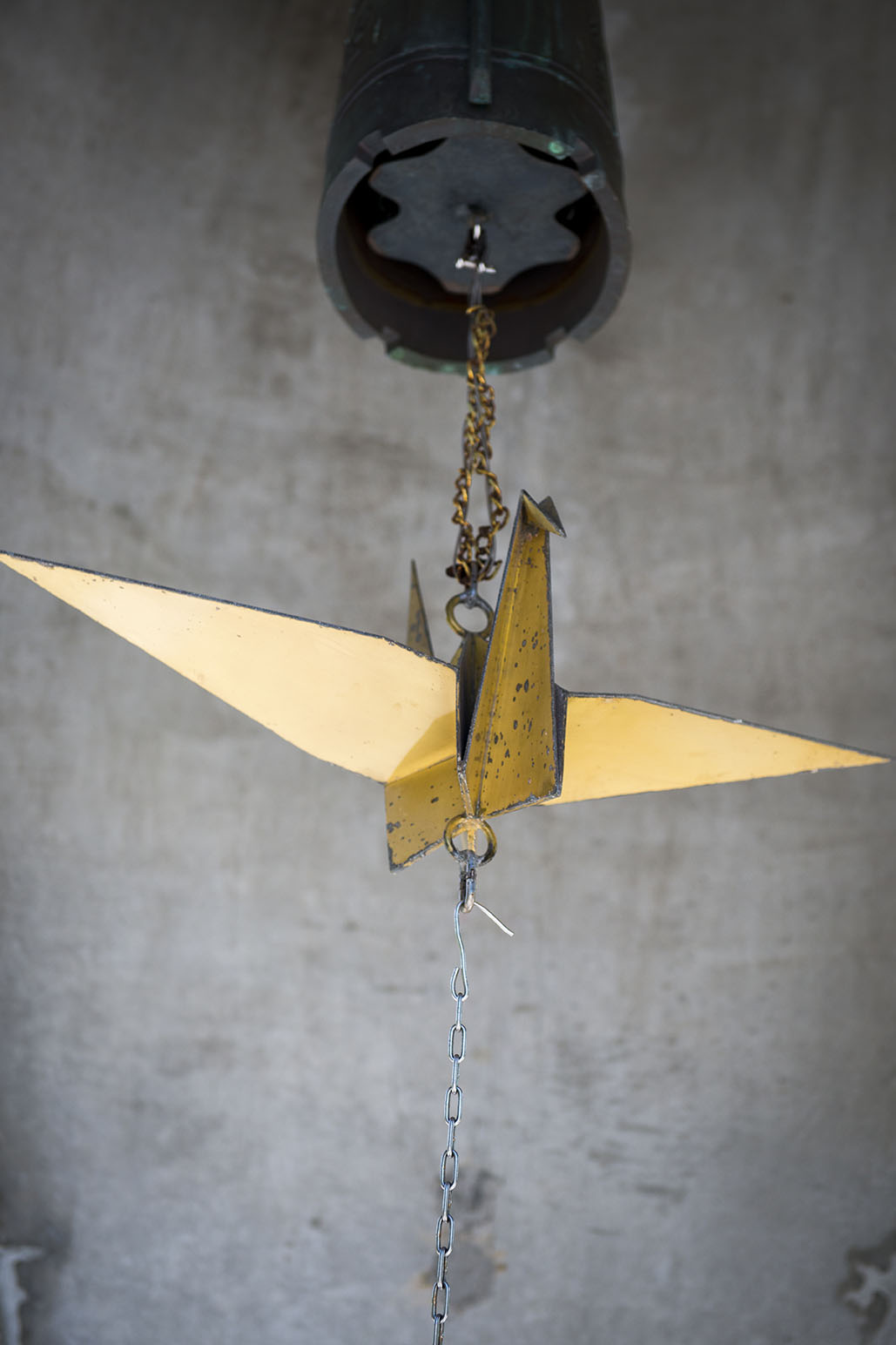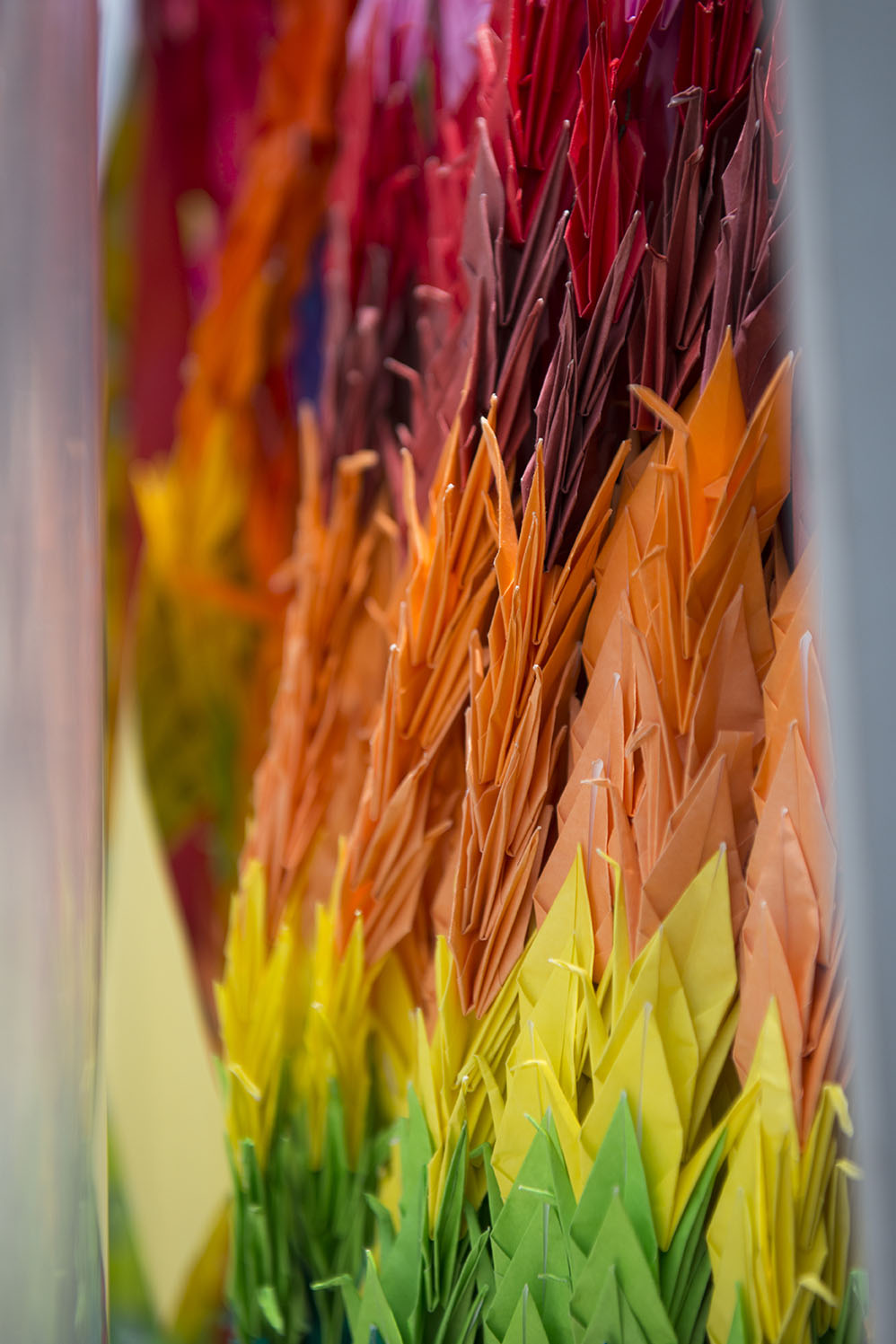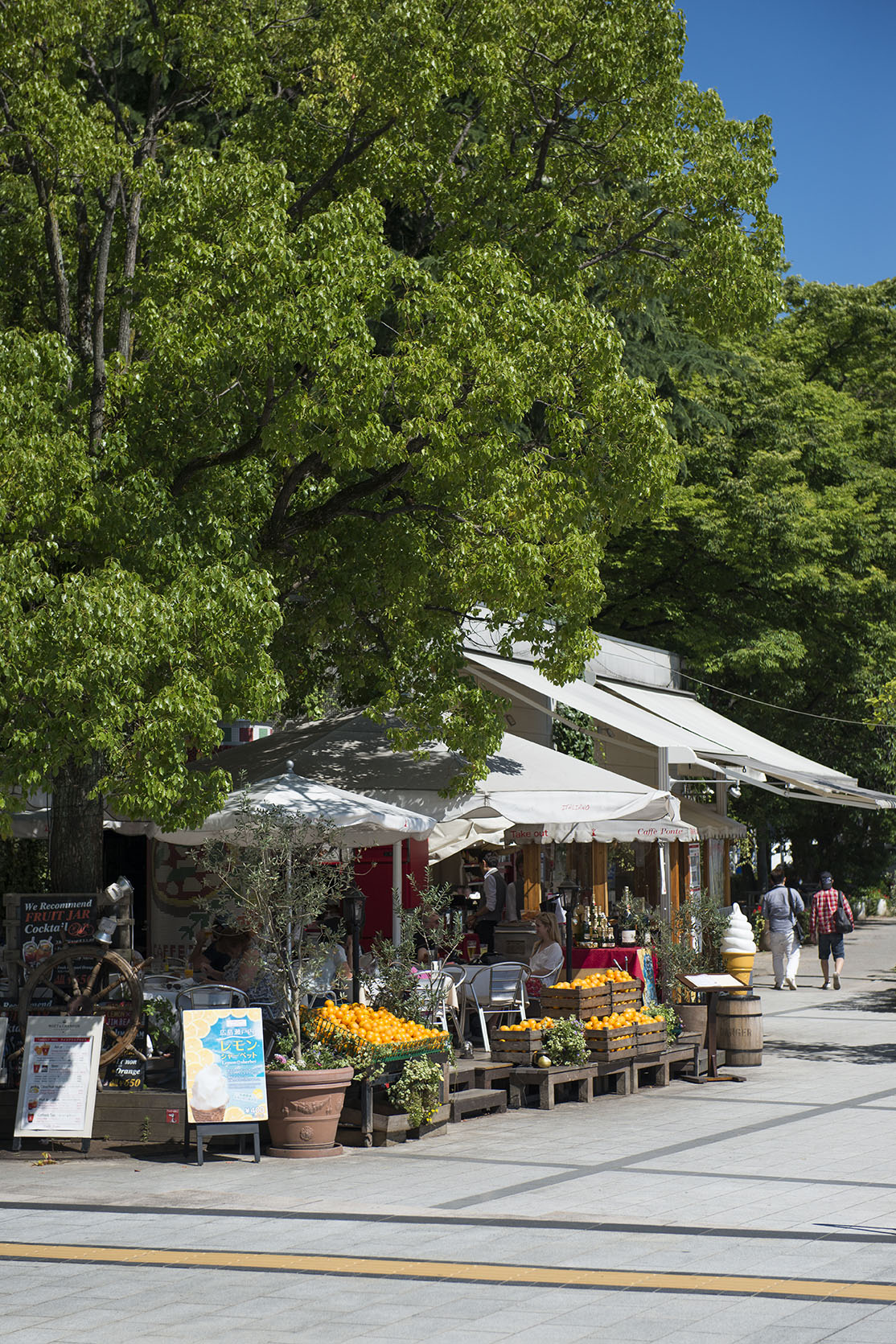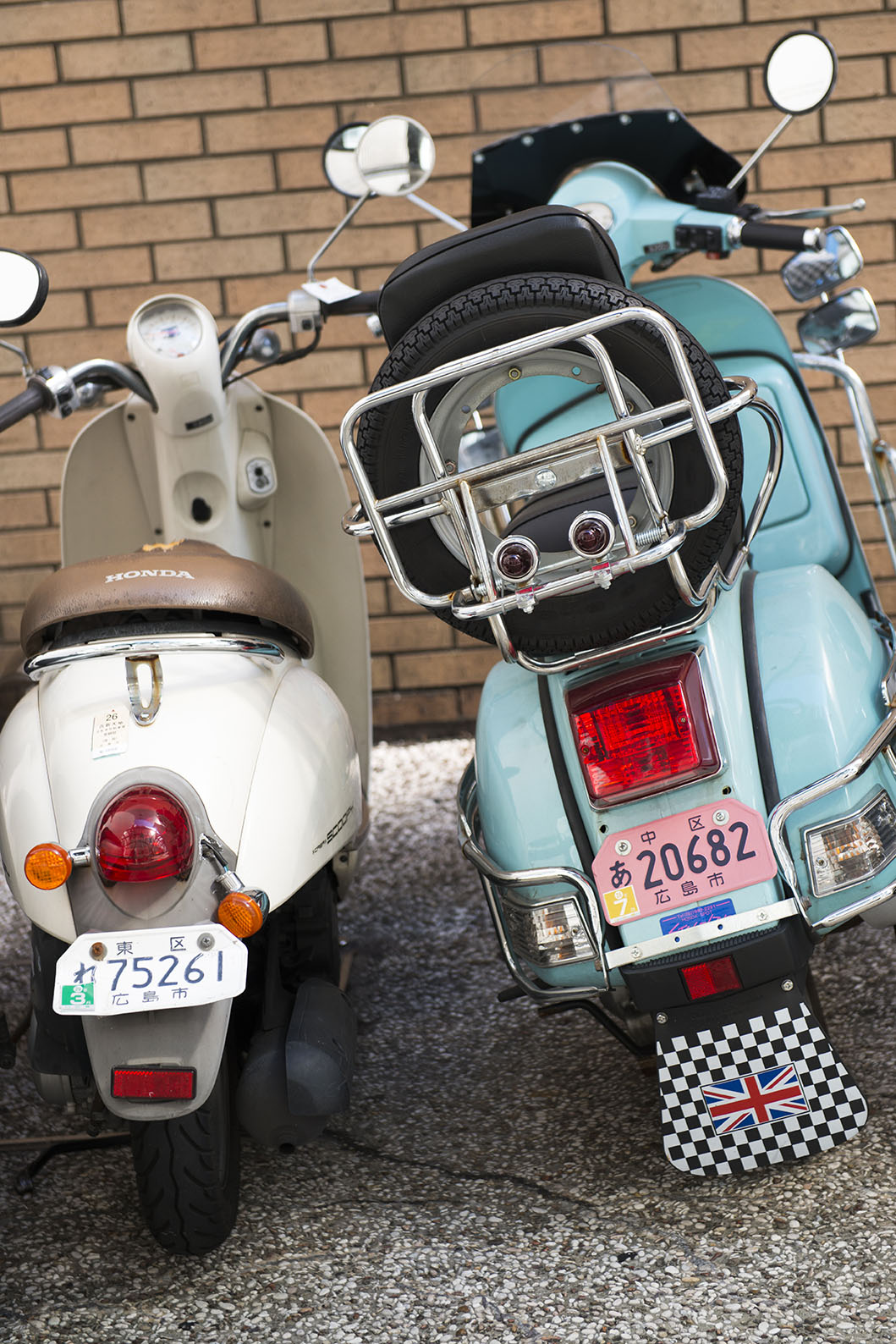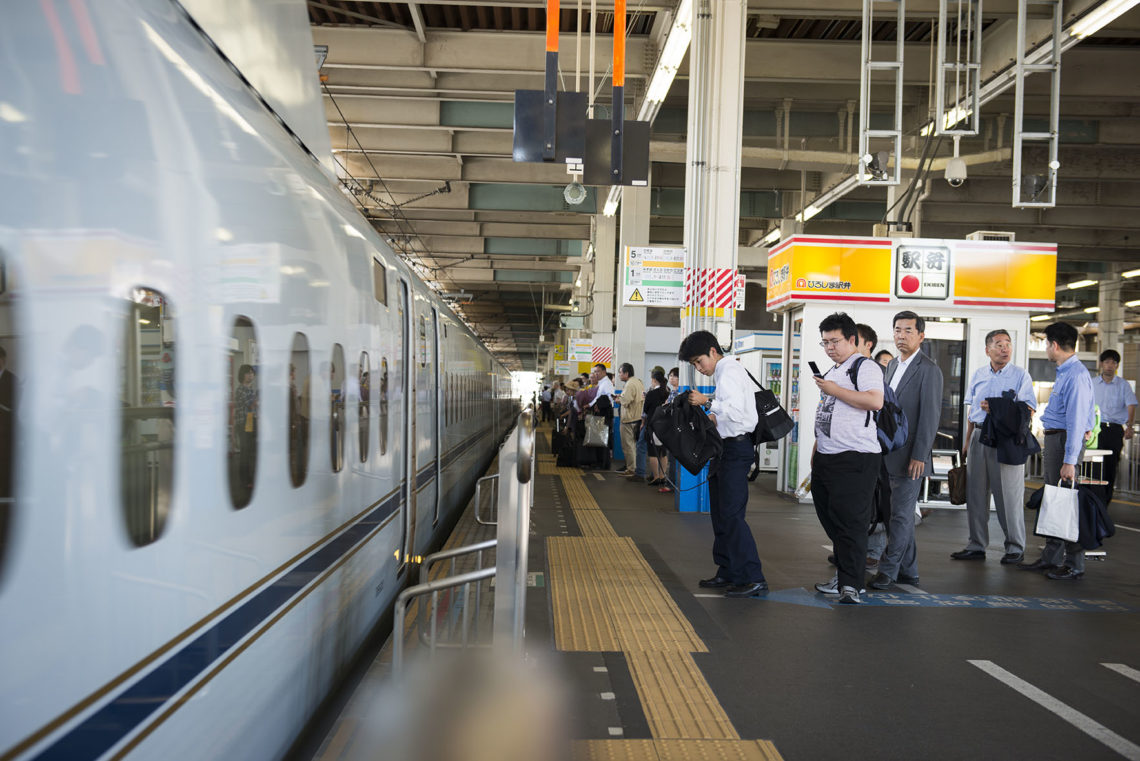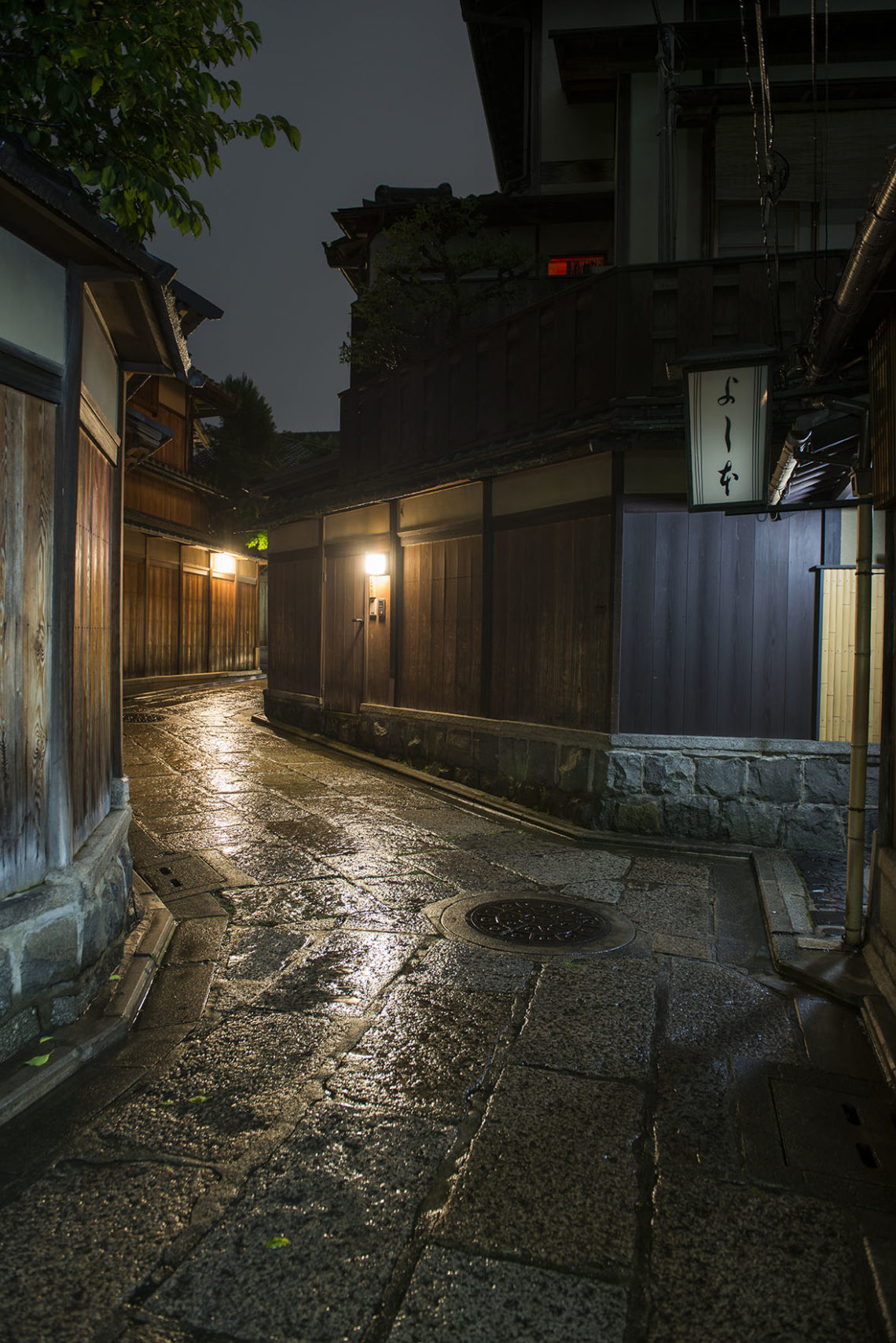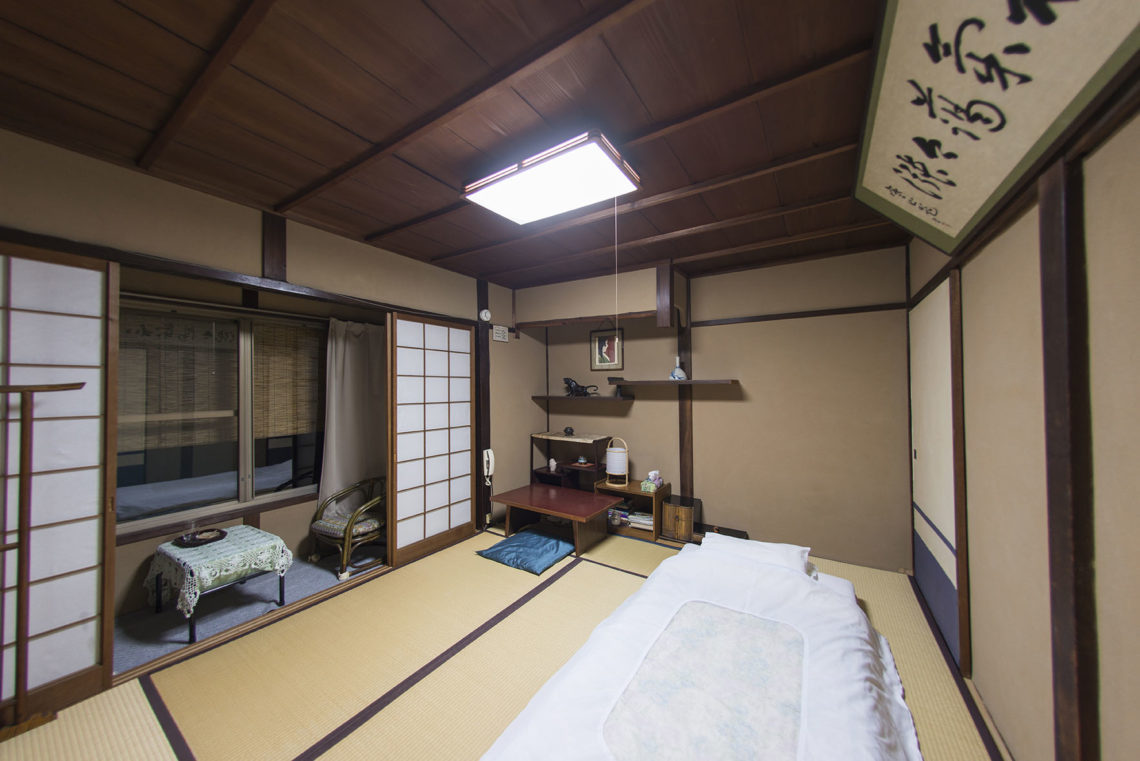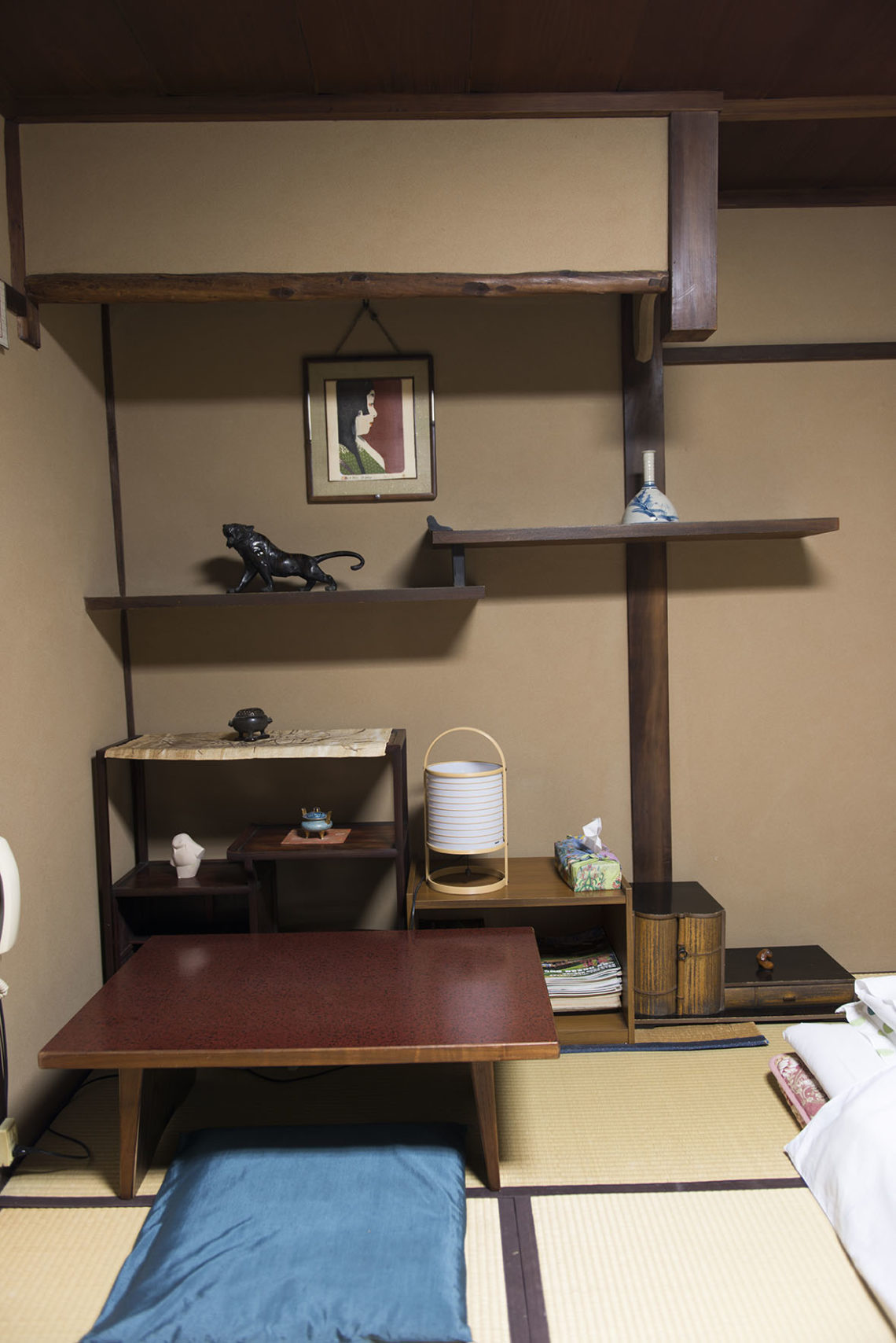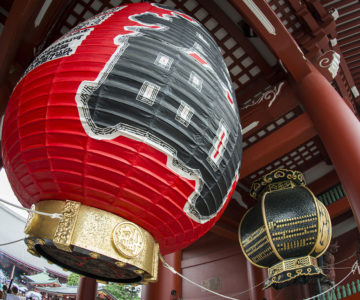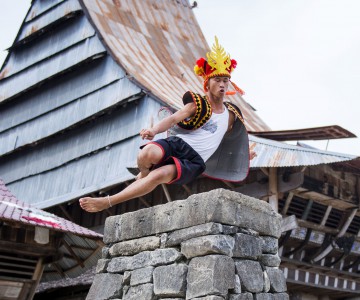Already regretting the whistle-stop nature of this trip, I make the most of the following day and it’s sensational weather by charging around as much of Hiroshima as I can, taking in the famous Genbaku Dome and peace memorial complex. On Monday, August 6, 1945, at 8:15 a.m., the nuclear weapon “Little Boy” was dropped on Hiroshima by an American B-29 bomber, the Enola Gay, directly killing an estimated 70,000 people. By the end of the year, injury and radiation brought the total number of deaths to around 129,000. These facts are pretty hard to wrap your head around on paper, but suddenly become a whole lot more real when you’re staring at a wax model of a family with their skin melting off, or inspecting a cluster of glass jars from a shop window that got so hot they actually fused together on a cellular level. It’s harrowing stuff, and serves as a reminder that an atrocity on this level must never happen again. Counteracting the horrors inside the museum, schoolchildren from all over Japan gather in groups around the peace park outside to sing hymns of hope, while hanging long chains of coloured origami cranes on almost everything in memory of Sadako Sasaki – a survivor of the bombing who was just two years old at the time.
Forty-five minutes back up the track I arrive in the former Japanese capital city of Kyoto. My digs for the next two nights are in a ryokan (Japanese traditional boarding house) across town, and it’s tempting to just hop in a cab and fire up the Google maps, but I take a perverse pride in navigating new places via public transport. 45 minutes and two train changes later I’m no closer, and decide to take to the streets on foot, dragging my wheeled bag behind me for a good hour before arriving in a seemingly deserted alleyway miles from anywhere. Ordinarily this would have been a bad idea and I would have been promptly mugged for my trainers and wallet, but this is Japan – quite probably the safest place on earth. I’ve heard stories of groups who lose their cameras/iPhones etc in Tokyo on purpose and then place bets on whose stuff will turn up first at the police lost property department. My train of thought is abruptly cut off as a sliding panel door bangs open to reveal the tiniest old lady I have ever seen. Smiling warmly, she grabs my case and lugs it upstairs to my room with staggering ease – especially considering it probably weighs about twice as much as her. I try to help but Mrs. Oemura has been running the ryokan for about sixty years and clearly this isn’t the first massive bag she’s manhandled up what is more or less a stepladder.
At the top, my room is more or less a paper box with some bamboo matting on the floor and a few weird ornaments arranged in perfect zen in the corner. It doesn’t really look that comfy, but after a hot bath and a cup of green tea I’m so relaxed I could sleep in a phone box, and drift off almost immediately amidst dreams of melting cups and speeding bullets.

